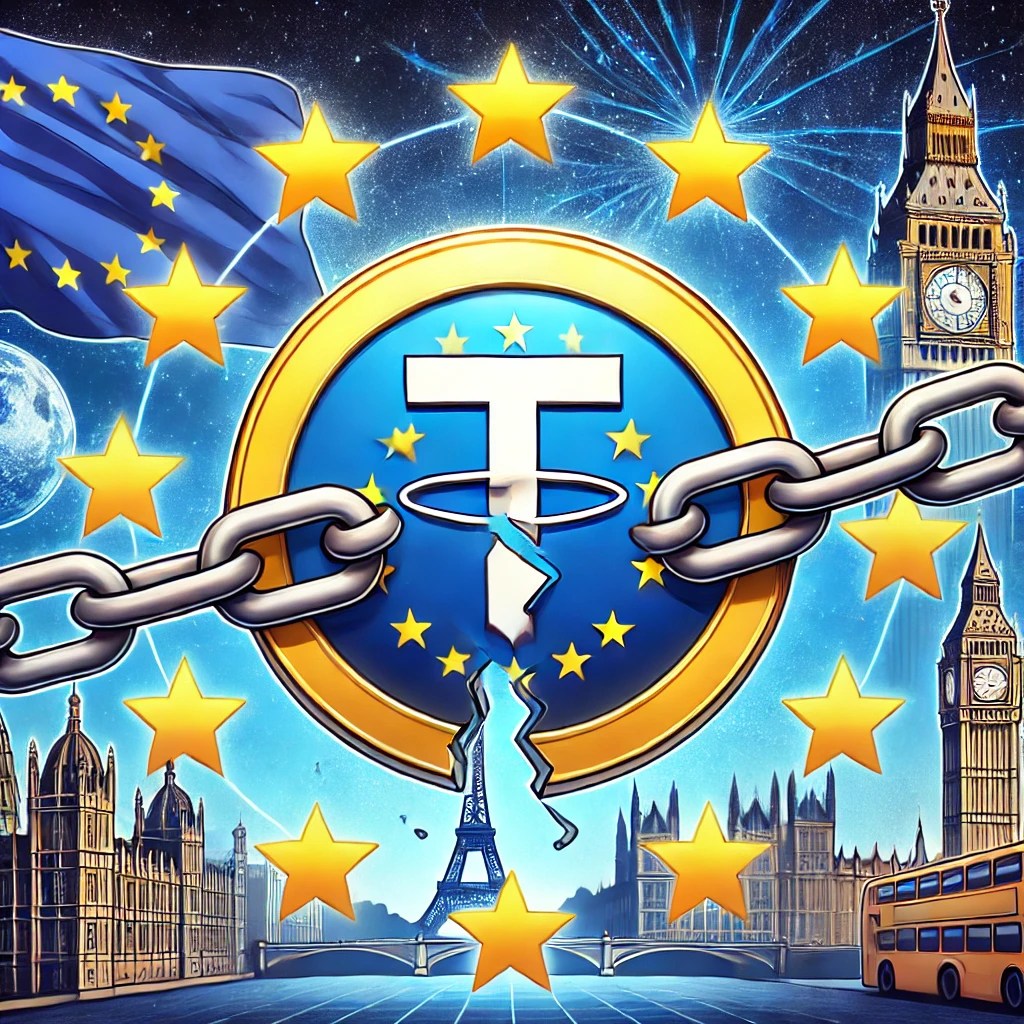Tether appears to have now been affected by regulatory adjustment in Europe. Particularly, with the EU’s new Markets in Crypto-Assets (MiCA) regulations scheduled to fully take effect in its member states by the end of the year, the crypto landscape is being reshaped.
Intended to increase oversight as well as eliminate illegal practices, MiCA requires stablecoins traded on centralized exchanges to be issued by firms with an e-money license. Several crypto exchanges operating in the EU have responded by delisting the world’s leading stablecoin, Tether’s USDT.
This development has fed fears about liquidity and investor appeal due to the USDT delisting.
Tether Delisted: Implications For EU Crypto Markets
USDT is a stablecoin and a key part of the crypto ecosystem as it is an important tool for trade and settlement of cryptocurrency transactions.
Banning access to Tether across the continent could backfire on the region as it may push traders away from vanity-centric territories or cause traders to turn to illiquid trading pairs.
Usman Ahmad, CEO of Zodia Markets, highlighted the decision’s significant impact, describing it as both “exclusionary and disruptive” for EU-based clients. Usman noted:
I understand why it’s been done to a certain extent, but it’s quite exclusionary and quite limiting for EU clients themselves because [USDT] is the most liquid stablecoin by a country mile
Notably, the removal of Tether from EU exchanges has already caused shifts in trading patterns. According to Bloomberg, with fewer USDT trading pairs available, some exchanges report an increase in fiat trading pairs as traders adapt.,
Erald Ghoos, CEO of OKX Europe, noted that fiat currencies are increasingly being used for trading in the absence of Tether, a development that reflects changing market dynamics.
Europe Falling Behind In The Crypto Race?
Although the aim of MiCA is to fortify regulatory standards, critics have pointed out that it may actually impair the EU’s competitiveness as a crypto hub. Pascal St-Jean, CEO of crypto asset manager 3iQ Corp said:
A vast proportion of cryptoassets trade in a pair against Tether’s USDT. So the cost to investors having to trade out of a USDT pair, just to buy the same asset trading against another stablecoin, will cause disruption.
Bloomberg reported that the restrictions come as other regions, especially North America, are experiencing a flurry of crypto activity. PitchBook data shows that venture capital investment in European crypto startups is on course to decline to a four-year low in 2024, adding to the region’s woes.
Meanwhile, the United States, by contrast, now seems to be moving in a more crypto-friendly direction. President-elect Donald Trump’s administration has appointed several pro-crypto advocates to key positions, signaling a potential light-touch approach to regulation.
Featured image created with DALL-E, Chart from TradingView


